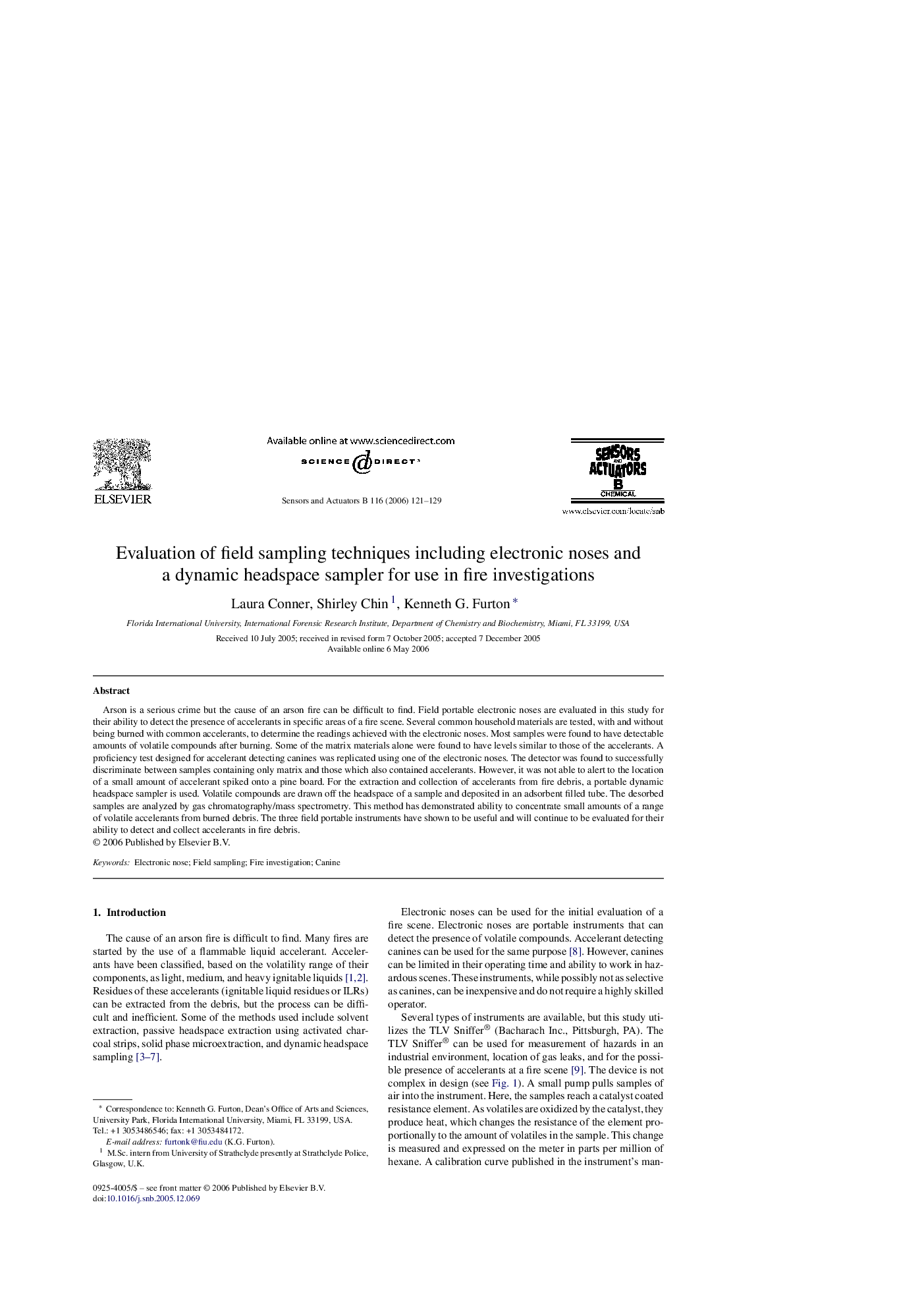| Article ID | Journal | Published Year | Pages | File Type |
|---|---|---|---|---|
| 746145 | Sensors and Actuators B: Chemical | 2006 | 9 Pages |
Arson is a serious crime but the cause of an arson fire can be difficult to find. Field portable electronic noses are evaluated in this study for their ability to detect the presence of accelerants in specific areas of a fire scene. Several common household materials are tested, with and without being burned with common accelerants, to determine the readings achieved with the electronic noses. Most samples were found to have detectable amounts of volatile compounds after burning. Some of the matrix materials alone were found to have levels similar to those of the accelerants. A proficiency test designed for accelerant detecting canines was replicated using one of the electronic noses. The detector was found to successfully discriminate between samples containing only matrix and those which also contained accelerants. However, it was not able to alert to the location of a small amount of accelerant spiked onto a pine board. For the extraction and collection of accelerants from fire debris, a portable dynamic headspace sampler is used. Volatile compounds are drawn off the headspace of a sample and deposited in an adsorbent filled tube. The desorbed samples are analyzed by gas chromatography/mass spectrometry. This method has demonstrated ability to concentrate small amounts of a range of volatile accelerants from burned debris. The three field portable instruments have shown to be useful and will continue to be evaluated for their ability to detect and collect accelerants in fire debris.
